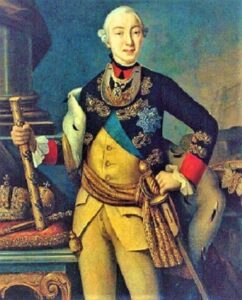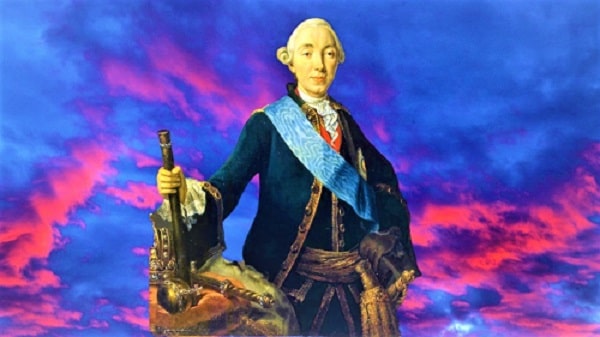Peter III of Russia (Born on February 21, 1728 – Died on July 17, 1762) was the Emperor of Russia from January to July 1762. Peter III was a very unpopular emperor in Russia for his pro- Prussian policies. After a six-month reign, he was dethroned and assassinated by his German wife, Catherine the Great, who ascended the throne.
Although not popular in the country, he did a lot of reform work in his 6-month reign. Religious freedom was proclaimed and compulsory education was supported. He tried to modernize the Russian army. He disbanded the militant group, which had won the hatred of the population with its harsh policies, and forbade landowners from killing their slaves without a court order.
His successor, Empress Catherine II, continued some of these decisions but revoked some of them. It is still debated whether Peter III was a powerful tsar overthrown by members of the army and nobles trying to seize political power or a mad and powerless man who accidentally ascended the Russian throne.
At the same time, there is no doubt that his successor, Catherine the Great, overshadowed her husband’s kingdom.

Facts About Peter III of Russia
- Born: 21 February 1728, Kiel, Germany
- Also Known As: Charles Peter Ulrich of Schleswig-Holstein-Gottorp
- Height: Approx 6ft (182 cm)
- Reign: 5 January 1762 – 9 July 1762
- Predecessor: Elizabeth
- Successor: Catherine II
- Spouse: Catherine the Great (m. 1745–1762)
- Children: Paul I of Russia, Anna Petrovna
- House: Holstein-Gottorp-Romanov
- Father: Charles Frederick, Duke of Holstein-Gottorp
- Mother: Grand Duchess Anna Petrovna of Russia
- Religion: Russian Orthodoxy
- Issue: Paul I of Russia
- Death: 17 July 1762, Ropsha, Russia
- Cause of Death: Maybe Severe Intestinal Infection (But still unknown)
- Burial: Peter and Paul Cathedral
Early Life of Peter III of Russia
Peter III was born in Kiel, in the duchy of Holstein-Gottorp. Son of Duke Charles Frederick of Holstein-Gottorp (1700 – 1739), (nephew of Charles XII of Sweden), and the Grand Duchess Anna Petrovna of Russia (1708 – 1728), (daughter of Emperor Peter the Great of Russia and his second wife, Catherine I of Russia).
His mother died after a few months of his birth. In 1739, Peter’s father also died and he became Duke of Holstein-Gottorp with the name of Charles Peter Ulrich at the age of 11. During the rest of his childhood and early years, he lived in the custody of his uncle, Adolf Frederick Holstein, King of Sweden.
This period at the Swedish court marked him deeply because his uncle provided him with a strict education and punishment. Therefore, He was considered the heir to both Sweden and Russia thrones.
Heir to The Throne
Since his aunt, Empress Elisabeth, had no children of her own, Peter named her heir to the throne on November 18, 1742. He converted to the Russian Orthodox faith, took the name Peter Fyodorovich and became Grand Duke. Previously, on November 4, 1742, parts of the Swedish estates had elected him to the Swedish throne, which Peter refused.

